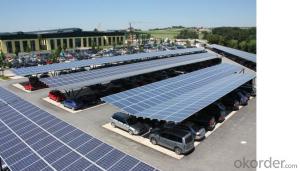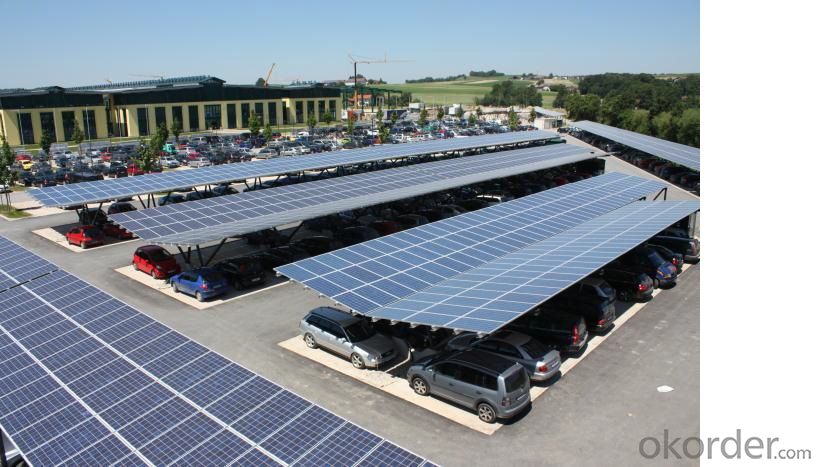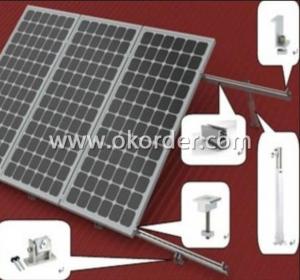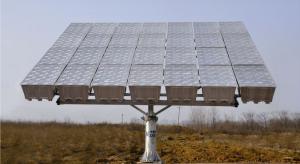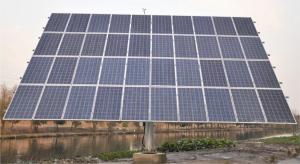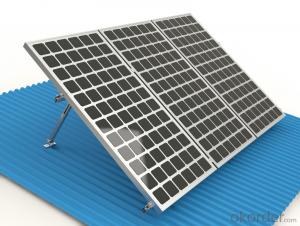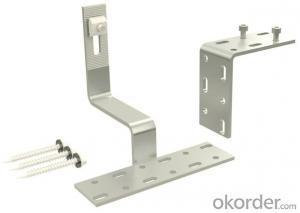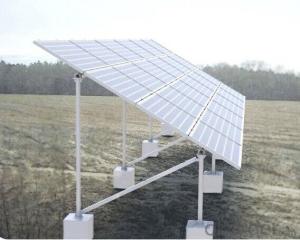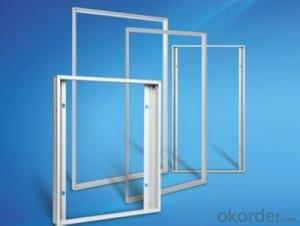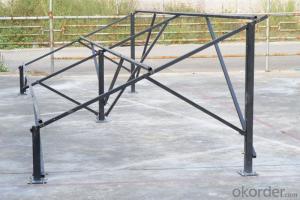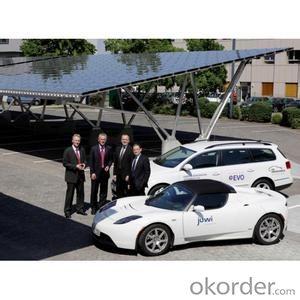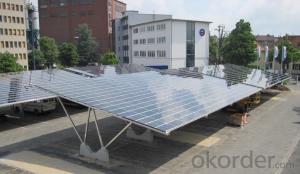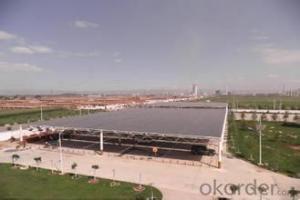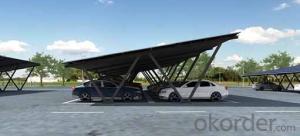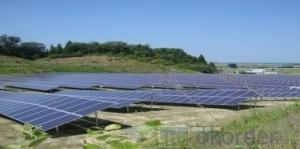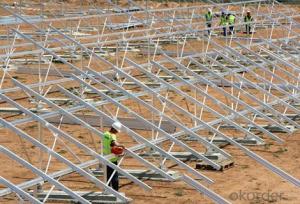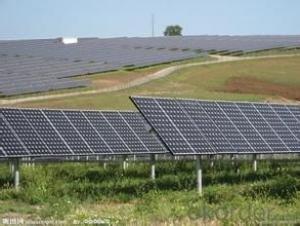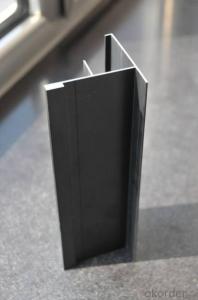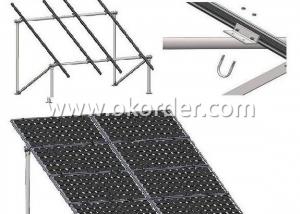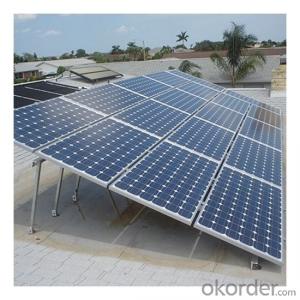Car Port B3 Flat Roof Solar Mounting System
- Loading Port:
- China Main Port
- Payment Terms:
- TT OR LC
- Min Order Qty:
- -
- Supply Capability:
- -
OKorder Service Pledge
OKorder Financial Service
You Might Also Like
Car Port B3
Unser Carport System Park@Sol basiert auf der konsequenten Weiterentwicklung der Schletter-FS-Freiland-Montagesysteme, mit denen bereits viele Projekte im Bereich von mehreren hundert MW realisiert wurden. Besondere Erfahrungen bestehen hier nicht nur im Bereich der individuellen statischen Optimierung für unterschiedlichste regionale Schnee- und Windverhältnisse, sondern auch in der Befestigung beliebiger Modulbauarten. Wir konstruieren, planen und fertigen individuell geplante Carports schon ab einem Stellplatz.
- Q: Can solar mounting systems be installed on rooftops with bird deterrents?
- Yes, solar mounting systems can be installed on rooftops with bird deterrents. Bird deterrents, such as spikes, nets, or wires, are often installed on rooftops to discourage birds from nesting or perching. These deterrents can coexist with solar mounting systems without causing any significant issues. However, it's important to ensure that the bird deterrents are properly installed and do not interfere with the structural integrity or functionality of the solar panels.
- Q: Can solar mounting systems be installed on buildings with limited roof load capacity?
- Yes, solar mounting systems can be installed on buildings with limited roof load capacity. There are lightweight and low-profile solar mounting systems available that minimize the additional weight on the roof. These systems are designed to distribute the load evenly and prevent any structural damage to the building. It is important to assess the building's load capacity and consult with a professional to ensure that the solar mounting system is compatible with the roof's limitations.
- Q: Can a solar mounting system be used in areas with corrosive environments?
- Yes, a solar mounting system can be used in areas with corrosive environments by using materials that are resistant to corrosion, such as stainless steel or aluminum, and by implementing appropriate protective measures like coatings or galvanization.
- Q: Are there regulations or permits required for installing solar mounting systems?
- Yes, regulations and permits are typically required for installing solar mounting systems. The specific requirements may vary depending on the location and jurisdiction, but obtaining permits and complying with local building codes and regulations is generally necessary to ensure the safe and compliant installation of solar mounting systems. These regulations and permits cover aspects such as structural stability, electrical safety, zoning, and fire codes. It is important to consult with local authorities or engage with a professional installer who can guide you through the necessary processes to meet all legal and safety requirements.
- Q: Can a solar mounting system be used with solar-powered street lights?
- Yes, a solar mounting system can be used with solar-powered street lights. The mounting system provides a sturdy structure for the installation of solar panels, which generate electricity to power the street lights. This allows for efficient and environmentally-friendly lighting solutions in public areas.
- Q: Can a solar mounting system be tilted to optimize the angle of the panels?
- Yes, a solar mounting system can be tilted to optimize the angle of the panels. This adjustment allows for better exposure to sunlight, maximizing the energy output of the solar panels.
- Q: Can a solar mounting system be used with solar battery storage systems?
- Yes, a solar mounting system can be used with solar battery storage systems. The solar mounting system provides the structure and support for the solar panels, while the battery storage system stores excess energy generated by the panels for later use. The two systems work together to maximize the efficiency and effectiveness of solar energy utilization.
- Q: Are there disadvantages to using a ground-mounted solar mounting system?
- Yes, there are some disadvantages to using a ground-mounted solar mounting system. One major disadvantage is the requirement of a significant amount of land. Ground-mounted systems occupy valuable space that could otherwise be used for other purposes. Additionally, ground-mounted systems often require excavation and grading, which can increase the installation cost. Moreover, ground-mounted systems are more susceptible to shading from nearby trees or buildings, which can reduce their overall efficiency.
- Q: Are there any government incentives or rebates available for solar mounting systems?
- Yes, there are government incentives and rebates available for solar mounting systems. Many countries and states offer various financial incentives such as tax credits, grants, and rebates to encourage the installation of solar energy systems. These incentives aim to reduce the upfront costs and make solar mounting systems more affordable for homeowners and businesses. It is recommended to check with local government authorities or consult a solar energy professional to learn about the specific incentives and rebates available in a particular area.
- Q: Can a solar mounting system be used with solar facades?
- Yes, a solar mounting system can be used with solar facades. The mounting system provides the necessary support and structure to securely install solar panels on building facades, allowing for efficient energy generation from both rooftop and vertical surfaces.
Send your message to us
Car Port B3 Flat Roof Solar Mounting System
- Loading Port:
- China Main Port
- Payment Terms:
- TT OR LC
- Min Order Qty:
- -
- Supply Capability:
- -
OKorder Service Pledge
OKorder Financial Service
Similar products
Hot products
Hot Searches
Related keywords
